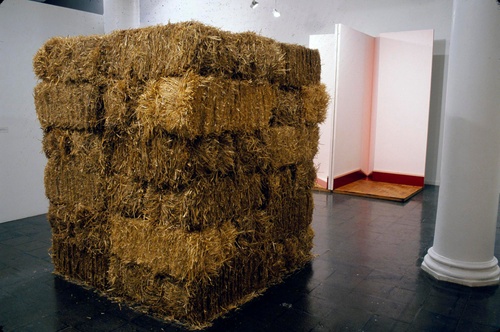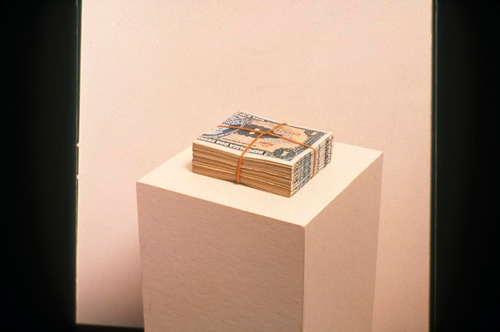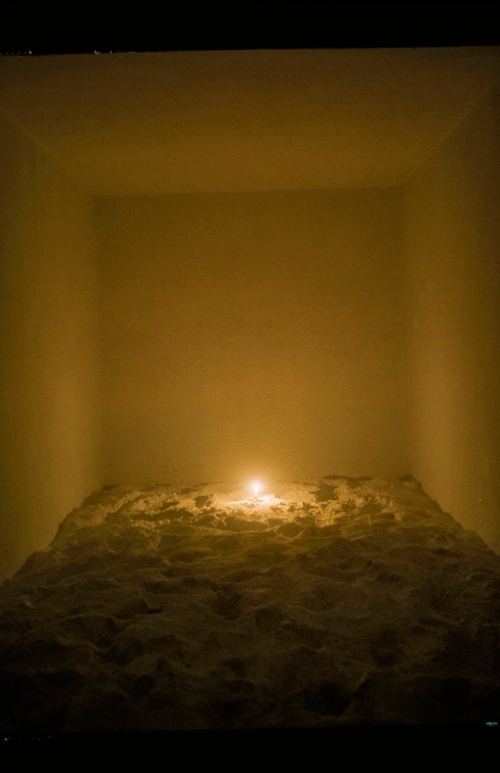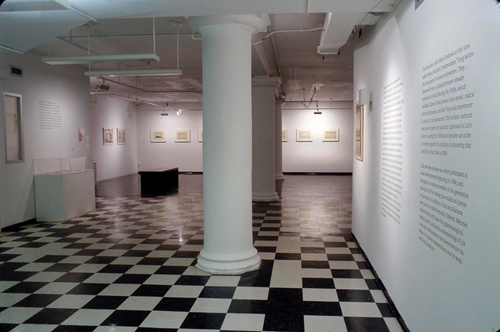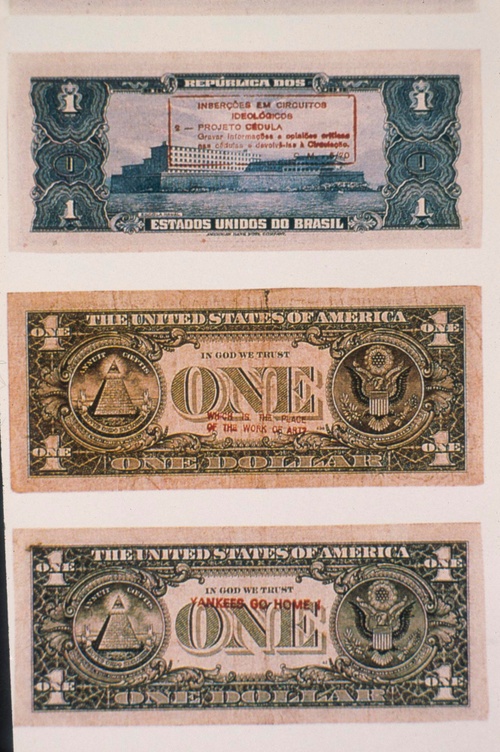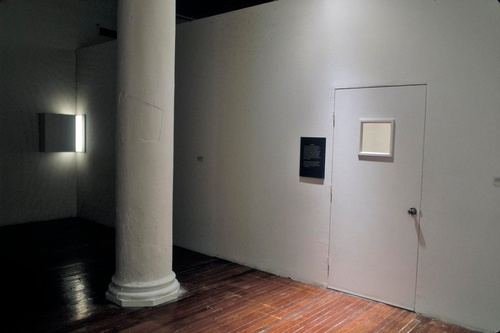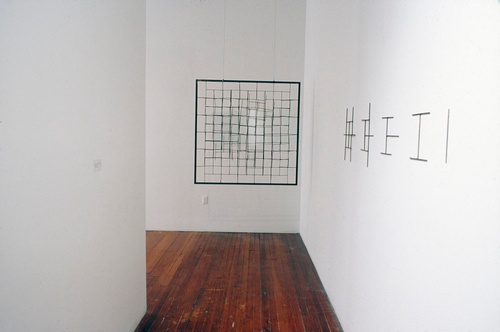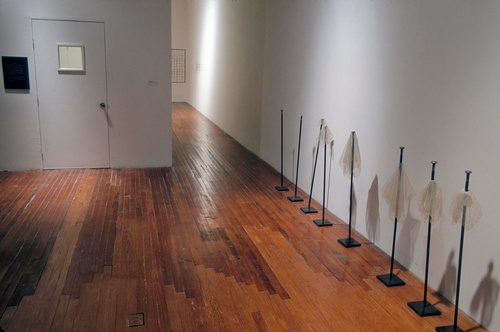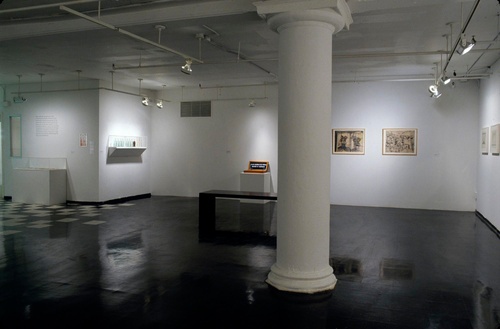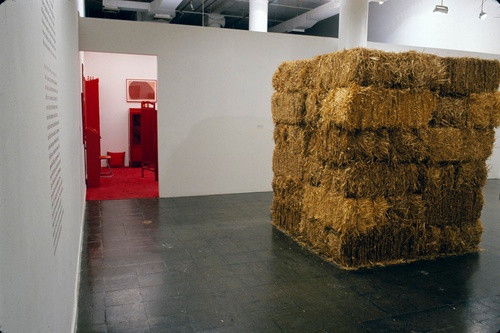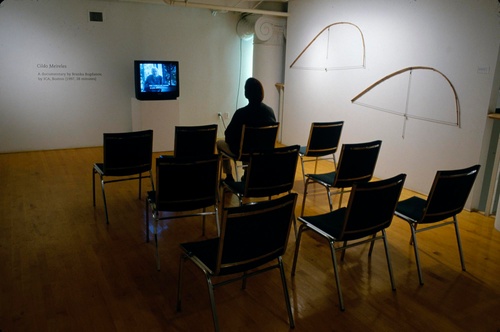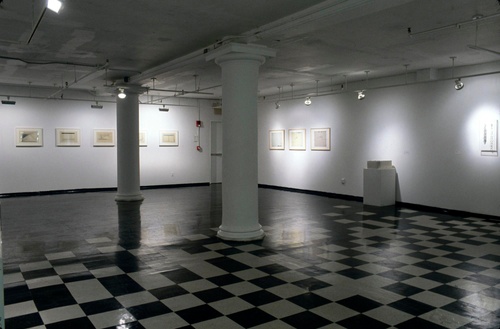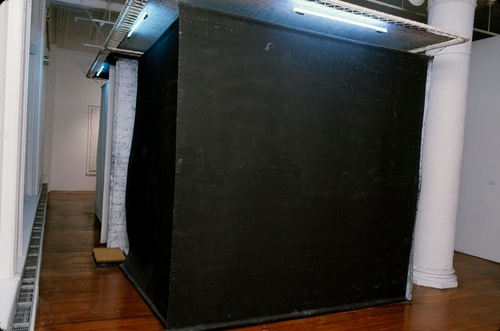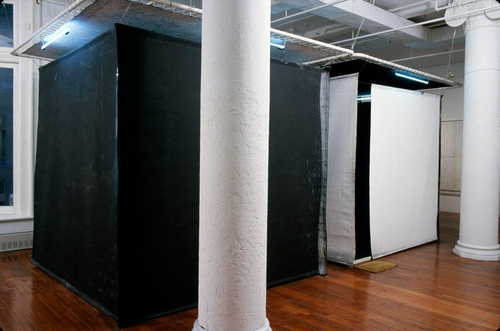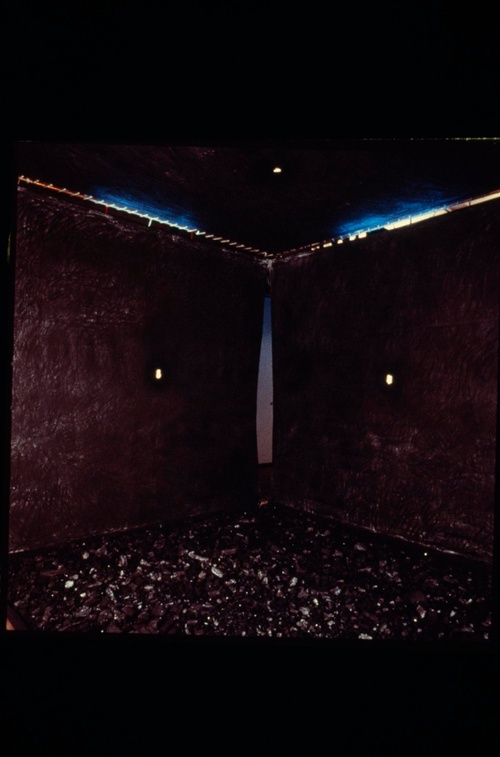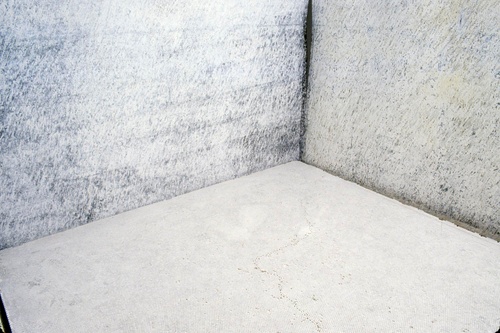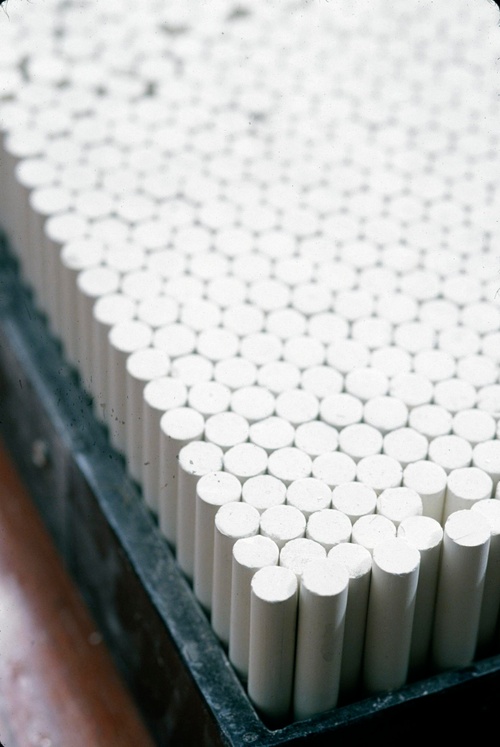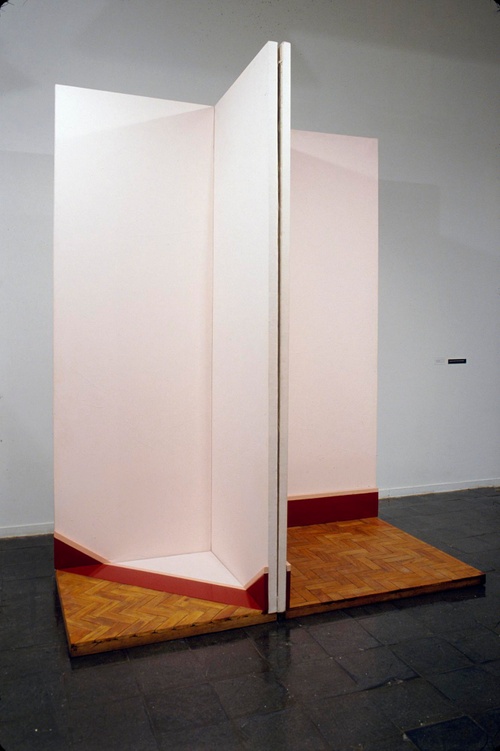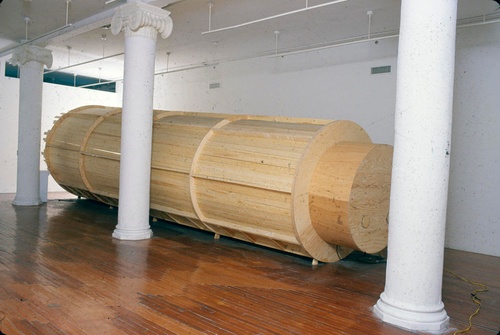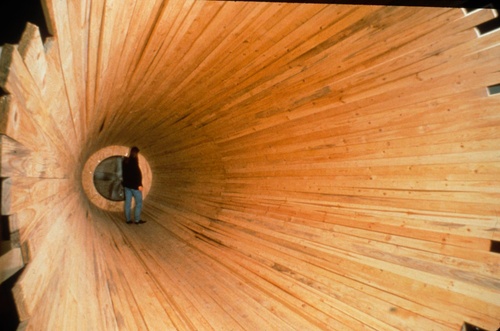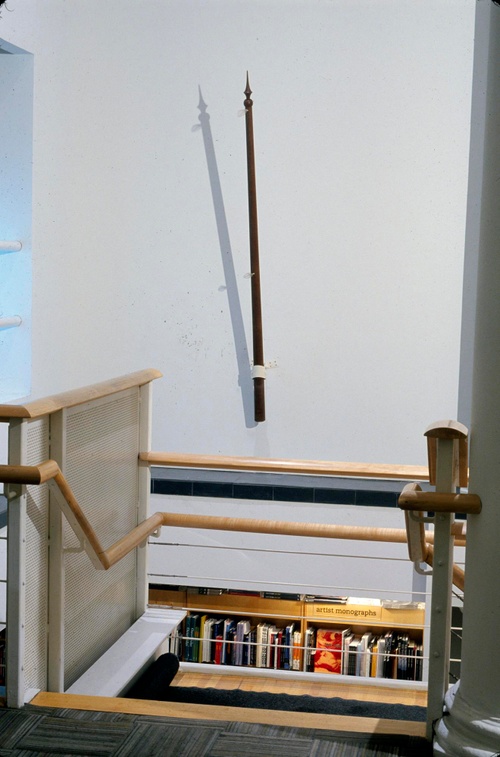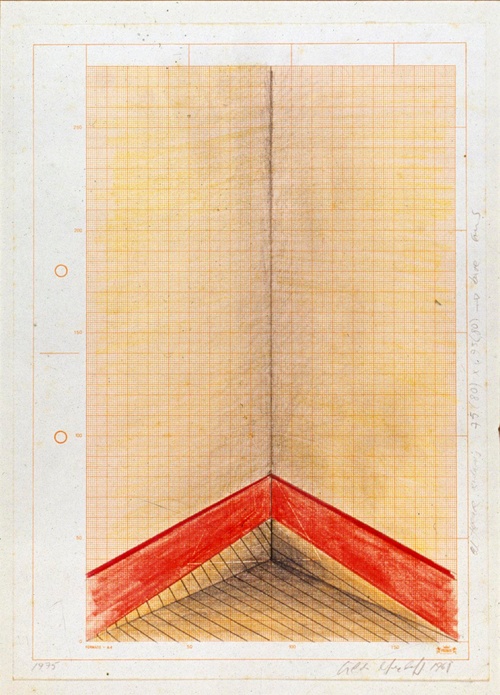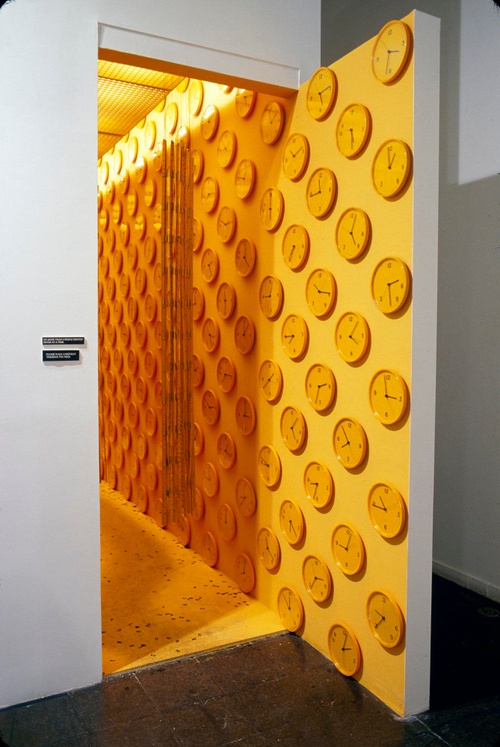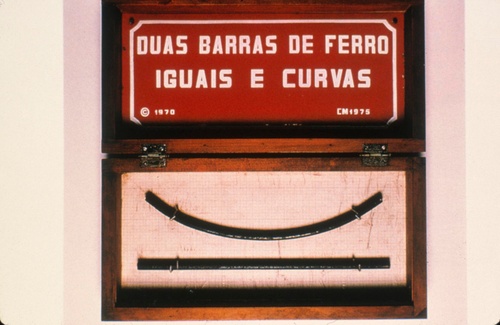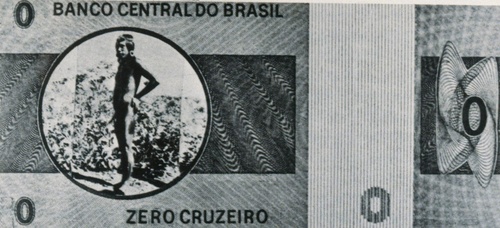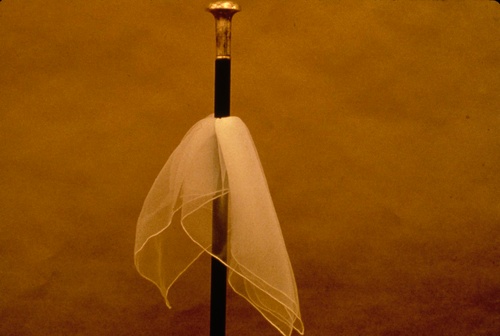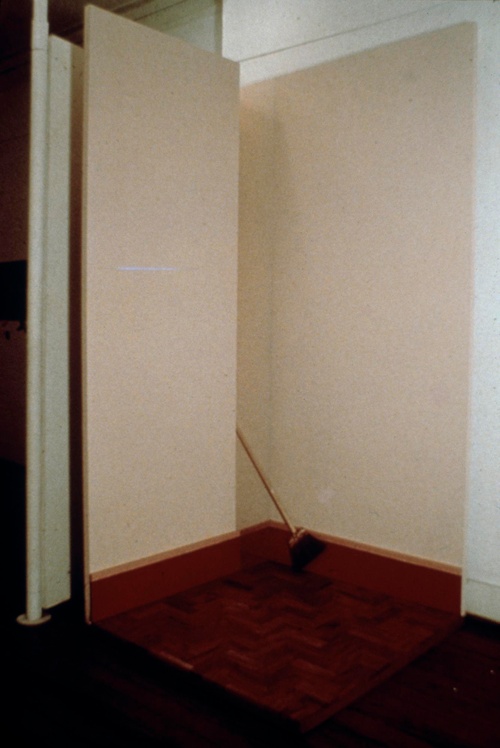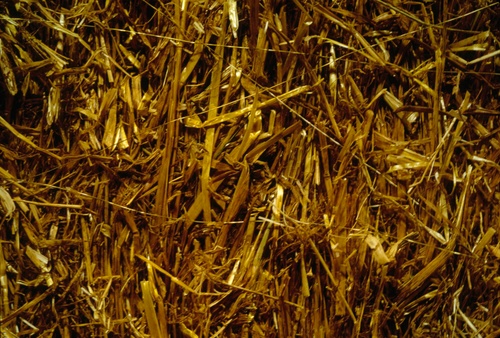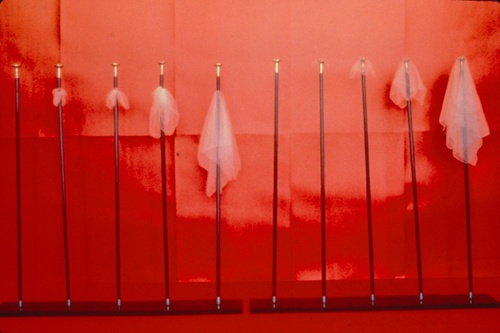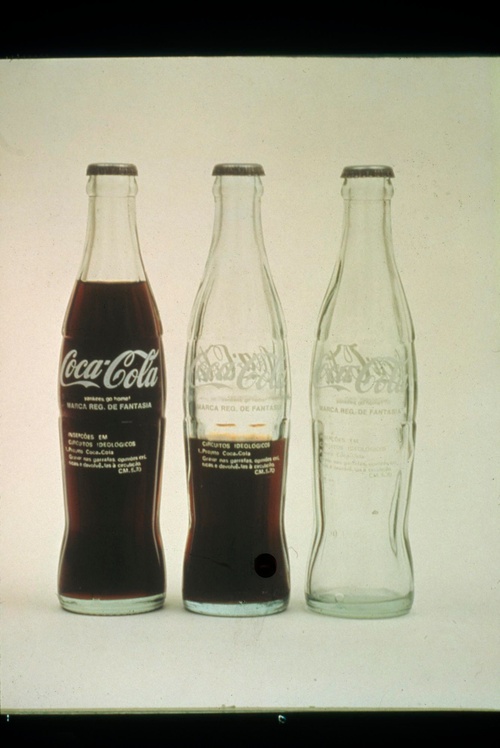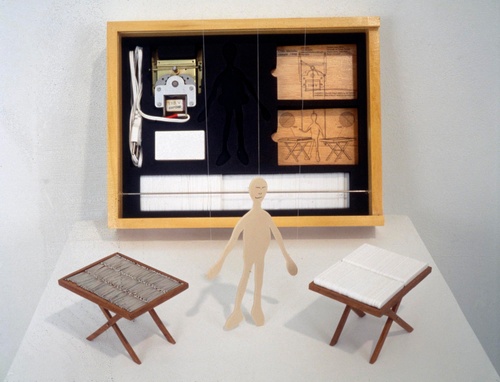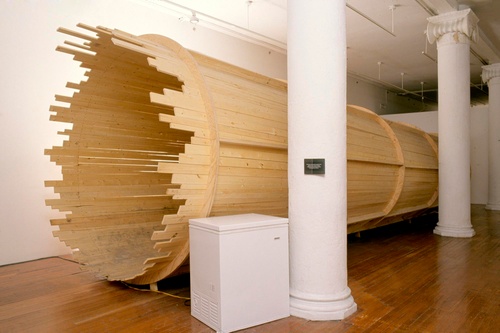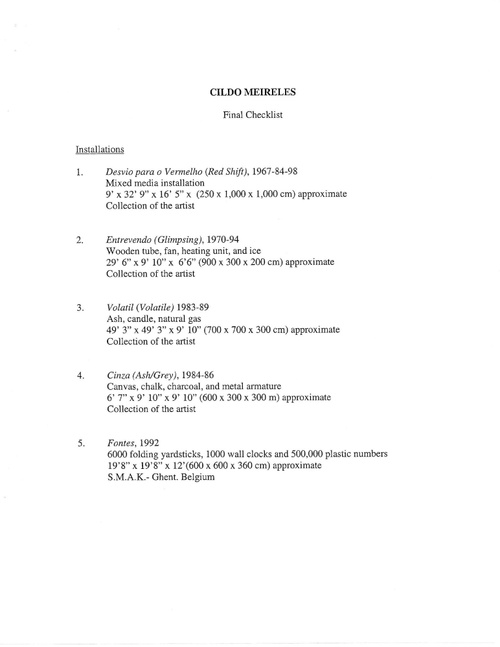Cildo Meireles
Cildo Meireles
Cildo Meireles is the latest in the New Museum’s continuing series of exhibitions of pioneering artists working outside the United States. This is the first exhibition of Meireles’ work to be organized by a U.S. museum and the most comprehensive survey of a South American artist ever presented in New York.
In recognition of Meireles’s stature as one of the most innovative figures at work today, this project draws on more than three decades of production and includes five room-scale installations, a dozen sculptures, and nearly thirty drawings. In keeping with Meireles’s overall thematic consistency, the works are arranged not chronologically but rather to emphasize their visceral and conceptual links. Born in 1948 in Rio de Janeiro, where he has lived most of his adult life, Meireles spent much of his youth in the capital city of Brasilia, a modernist metropolis carved out of the wilderness which helped shape his experience of the contrast between civilization and nature.
Beginning with his first museum exhibition in 1967, Meireles aligned himself with the preceding generation of Neoconcretists: Lygia Clark, Helio Oiticica, and Lygia Pape. These artists rejected the passive nature of most art exhibited in museums in favor of creating participatory works; in the process they forged a form of Conceptual Art that responded directly to cultural conditions in Brazil. Their principal achievement was a collective re-imagining of spatial perception, which Meireles dealt with in the two versions of EspaÁos Virtuais: Cantos [Virtual Spaces: Corners, 1967-68] shown here. Appearing at first to be a simple architectural detail, the piece creates a visible rupture between perception and reality in the form of a human-sized slippage created as when two intersecting planes of a corner are augmented by a third.
During the late 1960s, the imposition of a ruthless military dictatorship in Brazil along with the proliferation in Latin America of radical political theory prompted Meireles to create works fusing current events with the mechanics of perception. The most potent of these, Desvio para o Vermelho, uses an overwhelming predominance of the color red to act as a filter of normalcy and to convey the unspeakable terror it attempts to mask. Undertaken in response to the murder of a journalist by the police, the three-part environment transports the spectator from a tranquil monochrome interior to an ostensible crime scene, imparting a visceral sensation of the inevitability of violence under a repressive regime.
In a group of works made in 1970, InserÁžes em Circuitos Ideologicos [Insertions into Ideological Circuits], Meireles clandestinely intervened in the circulation of local currency and Coca-Cola bottles, inserting into these processes subversive messages that subsequently passed through unknown numbers of hands. Most of Meireles’s more recent works shape a narrow range of perceptual messages around a philosophical core. Fontes [1992], the first work one encounters upon entering the exhibition, is an enclosed labyrinth in which everything is colored mustard yellow. The interior is densely packed with several thousand misnumbered wooden rulers hanging from the ceiling, a dense web of dysfunctional clocks on every available wall, and a sea of loose vinyl numbers covering the floor. The experience of an environment in which the tools for basic measurement have transformed a space into an unnavigable morass is intensely disorienting.
Another work from the 1990s, Fio [Thread, 1990/95] appears to be a simple bale of hay but is in fact the repository of a gold needle and 250 feet of gold thread, woven throughout the mass of the hay and visible here and there on its surface. Since the gold is experienced only as a partially verifiable fact, its very presence transforms the colloquial expression “finding a needle in a haystack” into an exercise in the limits of perception. Like other Brazilian artists of his generation, Meireles has sought to enlist all the senses into the experience of his work. Before entering Entrevendo [Glimpsing, 1970/1994], a gradually tapering wooden tunnel, visitors are given two small pieces of ice, one slightly sweet and the other slightly salty, to put in their mouths. At the same time, from the far end of the dark tunnel an unseen fan blows warm air in the viewer’s direction. By privileging what are considered “lower” orders of perception (taste and touch) over sight, Meireles shows how an exclusively visual experience can cut us from our other senses and limit our awareness.
One of his most haunting installations, Volatil [Volatile, 1980/94] recontextualizes the experience of monochrome within a large J-shaped room, the floor of which is filled to mid-calf with several tons of light gray powdered talc. As the viewer, in bare feet, slowly rounds the curve of the room, the smell of gas and a hissing sound are encountered, increasing in intensity. Across the field of powder, a single candle is visible at the far wall. The ensemble of sensations provokes a strange mixture of feelings–utter tranquility along with deep anxiety at the seemingly dangerous combination of gas and flame. In the Public Access Gallery, a number of Meireles’s sculptures and drawings from the 1960s and 70s provide a sense of how his ideas function on a more intimate scale.
Following the InserÁžes series, Meireles created an alternate currency project, Zero Dollar [1978-84], Zero Cruzeiro [1974-78] and Zero Centavo [1974-78], in which he combined the notions of counterfeiting and valuelessness into a wry meditation on the nature of money. A more explicitly Duchampian sensibility is at work in such early sculptures as Para Ser Curvada Com os Olhos [To be Curved with the Eyes, 1970], a wooden box in which curved and straight metal bars represent “before” and “after” states. In Obscura Luz [Obscure Light, 1982], the painted shadow of a lightbulb appears “reflected” on a wooden surface illuminated by light from the same bulb. One of Meireles’s best-known sculptures, Malhas de Liberdade [Meshes of Freedom, 1977], a group of metal grids of varying density that intersect each other at the same point in space, serves as a powerful model of participatory democracy. Testing the boundaries of coexistence becomes, in the Malhas, as much a problem of engineering as one of aesthetics, demonstrating that the appearance of inviolable physical limits may be instead a starting point for the imagination.
